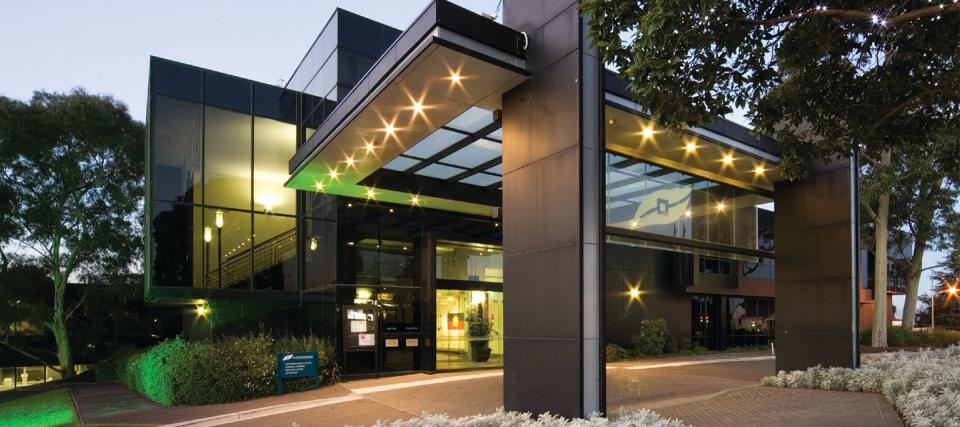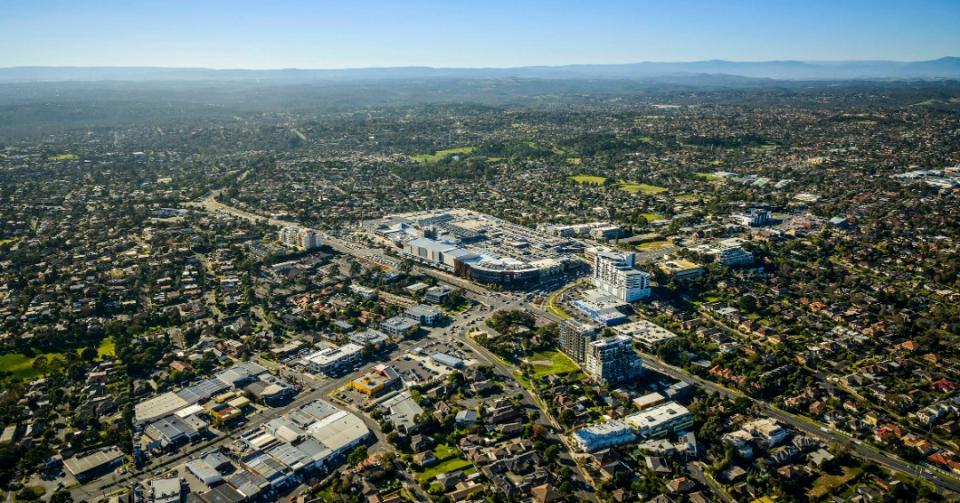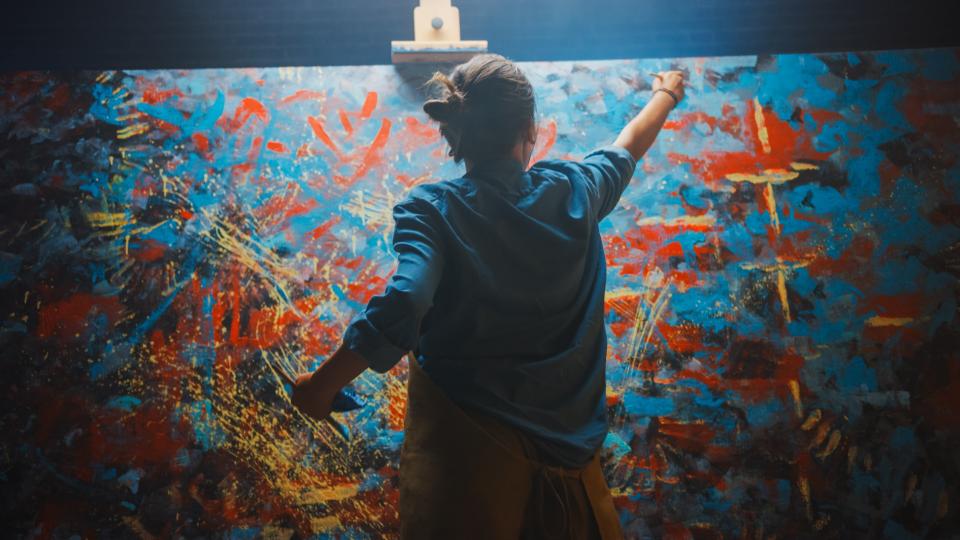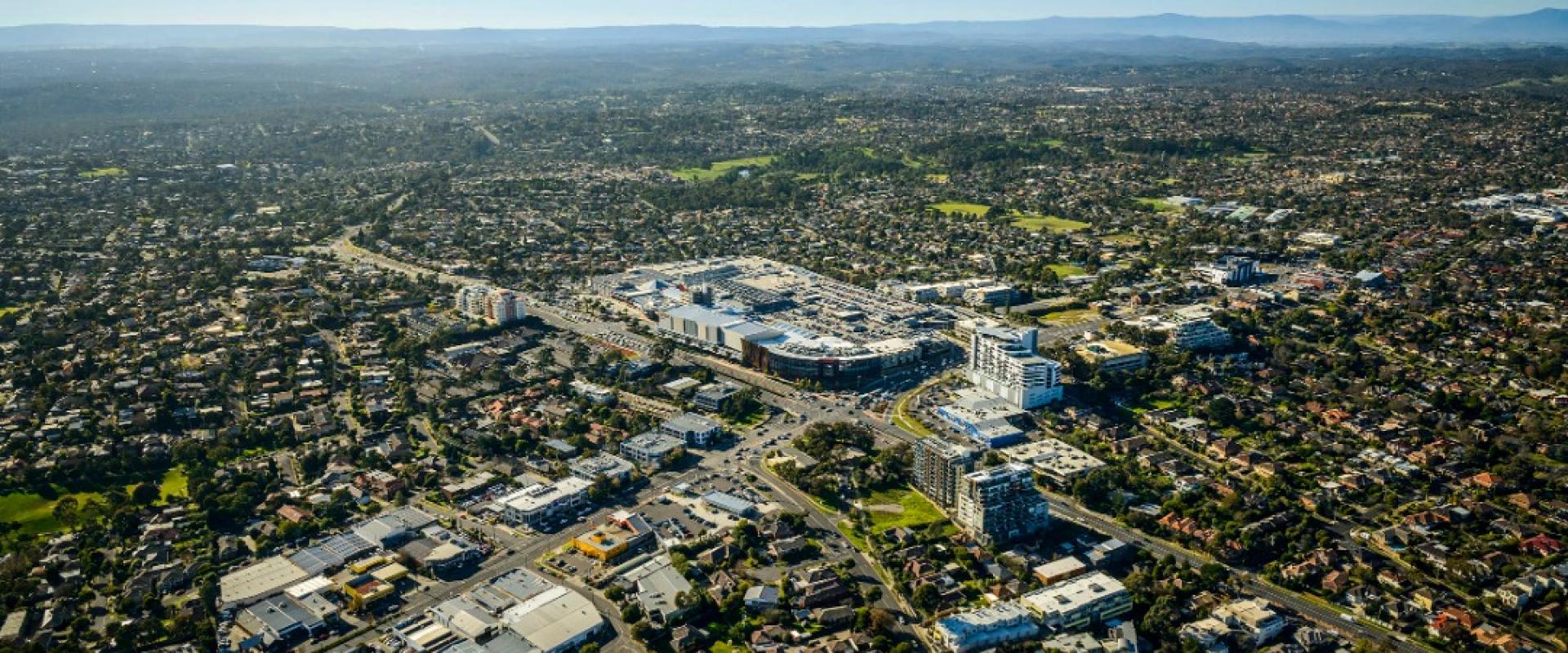
We are proud to deliver over 100 different services to our vibrant and diverse community. Discover our community, heritage and surrounds. Learn what drives our strategic vision - and how we do it.
We are proud to deliver over 100 different services to our vibrant and diverse community. Discover our community, heritage and surrounds. Learn what drives our strategic vision - and how we do it.

Learn more about your property's rates and valuations.

Find information on our policies.

Find information on our strategies and action plans.

There’s something for everyone in Manningham. From sacred sites of the area’s First Peoples to the early gold mining settlements, the local area has a bit of everything for you to appreciate and enjoy.

We are committed to developing and fostering partnerships with not-for-profit groups and organisations whose work enriches the municipality and is consistent with our vision.

We are committed to managing our city’s infrastructure efficiently and sustainably to better meet the needs and expectations of our growing community.
Our capital works program brings this commitment to life by managing the maintenance and improvement of council assets, facilities and community spaces through a number of key projects.
A bold new initiative, PUBLIC VIEW, is inviting the community to experience art as part of daily life – transforming familiar urban spaces into outdoor galleries.
Manningham Mayor, Councillor Deirdre Diamante, welcomed the initiative as a meaningful way to reconnect with creativity, nature and one another.
“In the rush of daily life, it’s easy to overlook the beauty woven into our surroundings. PUBLIC VIEW invites us to find moments to pause, take notice and engage more deeply with the spaces and people around us,” Cr Diamante said.
“Bringing creative expression into everyday environments opens space for reflection and sparks curiosity. It’s a gentle invitation to connect in ways we often overlook,” she added.
The current exhibition, view of nature in art, selected works by Terry Napier is now on display at Tunstall Square in Donvale.
A celebrated natural history artist, Terry has lived in Park Orchards for more than 57 years and has been painting since childhood. Terry has works held in Victorian collections. Renowned for his contributions to art education and his intricate nature studies, Terry’s work encourages viewers to pause and observe the natural world around them.
“Exhibiting at Tunstall Square is another chance to show people the magic and beauty in nature – to share with them what intrigues me and perhaps remind them of what we are in danger of losing. Art in public spaces can be that reminder,” Terry said.
To learn more about the exhibition, visit manningham.vic.gov.au/view-nature-art.
Top image: Terry Napier at the Tunstall Square Laneway exhibition of his work.
Standing approximately 13 metres high and weighing 12 tonnes, Sentinel was the first of three sculptures commissioned by Manningham Council to mark the major gateways to the city.
Casting a watchful eye over the area, its curved shapes symbolise the two creeks of the municipality - the Mullum Mulum and the Koonung. They enclose the blue oval form representing the City of Manningham.
Also by Inge King - Boulder.
Inge King AM was pivotal in developing and diversifying abstract sculpture in Australia and worked actively until she was 98 years old.
Born in Berlin, King trained at the Berlin Academy from 1937 to 1938, the Royal Academy School in London in 1940, and the Glasgow School of Art, Scotland, from 1941 to 1943. She taught art in Glasgow and London from 1944 to 1949. After moving to Australia in 1950, she taught sculpture at the Royal Melbourne Institute of Technology from 1976 to 1987.
A powerful female voice in the male-dominated sphere of industrial sculpture, King was part of the Centre Five group whose mission it was to help foster greater public awareness of contemporary art while integrating large-scale sculpture with architecture.
King used industrial techniques and surface finishes to construct refined geometric sculptures. With sequential shapes and formalist progressions, her works give a sense of movement frozen in time. The artist considered sculpture ‘vision in motion’ and described her work as ‘drawing from a thousand different angles’.
The importance of the viewer’s perspective and their dynamic experience of each object and its environment was central to King’s practice.
A painting in light.
A simple construction of LED lights, running the length of the underpass passage, projects light across the ceiling and down the walls. It creates the visual equivalent of an impressionist painting through which the pedestrian passes.
Creating the illusion of greater spaciousness within the underpass, the entire walls and ceiling of the ramps and the underpass are uniformly surfaced with a soft large, rectangular format ceramic tile, aligned vertically to enhance the sense of space.
The projected “light painting” to both ceiling and walls blurs the interface between the two surfaces, again helping to alleviate the oppressive sensibility of the low ceiling.
The project was funded by Manningham Council in collaboration with Department of Infrastructure (DOI) through the Local Area Access Program (LAAP). The fund was established by the Victorian Government to provide funding for the improvement of local access for walking, cycling and public transport.
Light art and glass art are terms commonly applied to the site specific public art of artist Warren Langley.
In a career spanning over 40 years, the past 20 years has seen an increasing use of light as a principle design element to create public art interventions which undergo day to night transformations.
Langley’s ouvre addresses the notion of sight/site, both visual and contextual and his 40 year portfolio of artworks for the built environment span all manner of materials and processes. He is most well known for his large scale works in light and glass.
Triptych is a play between sculpture and painting and takes the the shape of a game or wooden toy that addresses the subject of childhood, and of those who live in its field: children.
It is a work that addresses the future, and that they will – one day - be our future.
This project was commissioned as part of the redevelopment of the former Templestowe Primary school as the Manningham Templestowe Leisure Centre.
Boulder belongs to a series of twelve sculptures created between 1966 and 1972. They were inspired by the landscape off the coast of Western Australia.
"My fascination was with the precarious balance of large forms perched on top of small ones, emphasising movement at the same time. The rough welding is intentional; the small pieces are incorporated to enliven the smooth surface of the simple shapes. I see these works as part of the landscape, the black colour contrasting with the grey green of the surrounding foliage. The represent a move away from earlier figuration.” - Inge King
Also by Inge King - Sentinel.
Boulder was acquired by the City of Doncaster and Templestowe in 1994. We gratefully acknowledge the donations contributed towards the purchase of the work by Potters Cottage, Warrandyte Arts and Education Trust, and Warrandyte Community Market Committee.
Inge King AM was pivotal in developing and diversifying abstract sculpture in Australia and worked actively until she was 98 years old.
Born in Berlin, King trained at the Berlin Academy from 1937 to 1938, the Royal Academy School in London in 1940, and the Glasgow School of Art, Scotland, from 1941 to 1943. She taught art in Glasgow and London from 1944 to 1949. After moving to Australia in 1950, she taught sculpture at the Royal Melbourne Institute of Technology from 1976 to 1987.
A powerful female voice in the male-dominated sphere of industrial sculpture, King was part of the Centre Five group whose mission it was to help foster greater public awareness of contemporary art while integrating large-scale sculpture with architecture.
King used industrial techniques and surface finishes to construct refined geometric sculptures. With sequential shapes and formalist progressions, her works give a sense of movement frozen in time. The artist considered sculpture ‘vision in motion’ and described her work as ‘drawing from a thousand different angles’.
The importance of the viewer’s perspective and their dynamic experience of each object and its environment was central to King’s practice.
Manna Gum is inspired by the local eucalypt blossoms and marks the start of the Bolin Bolin Cultural Landscape Trail.
This trail passes through an area which was an important gathering place for the local Wurundjeri people due to its seasonal abundance of food. The Wurundjeri frequented the area when the billabongs were low, the eucalypts were flowering and they were able to collect nectar.
This project was commissioned by the Bolin Bolin Steering Committee, funded by Manningham Council and made with recycled materials donated by Bulleen Art and Garden.
Simon Horsburgh is primarily a sculptor and installation artist. His prevailing artistic preoccupations are with elemental dynamics and the formal and poetic potential of ordinary things.
He has exhibited extensively in Melbourne, as well as interstate and abroad across the past fifteen years. He has been the recipient of an Australian Postgraduate Award as well as Arts Victoria International Cultural Exchange and New Work Grants. He has an MFA (Research) from the Victorian College of the Arts and held a studio residency at Gertrude Contemporary.
These pieces are part of a large series of sculptures which are vertical and totemic.
Time in Spring and Time in Autumn refer to subtle changes and ‘Happenings’ in nature by their contract as a pair. The Clef has a musical reference and The Pendulum suggests a certain functionalism.
There is no hidden symbolism in these sculptures. They are about particular sentiments alluded to their titles. Being derived from the idea of totems they are particular of these sentiments.
Welcome to Future Ahead where opportunities for insight and reflection are just overhead.
Inspired by the native Xerochrysum viscosum which has many names including the Golden Everlasting, Future Ahead is designed to be the heart of the new park on Hepburn Road.
Bathing the park and its community in light, day and night. Future Ahead creates an expanding community crucible where connections and delightful discoveries abound and are an everyday occurrence.
Skunk Control create visually engaging works and immersive experiences that provide the public with a sense of wonderment and opportunities to make discoveries.
Drawing on technology; design and art and their training in engineering, science and education, their works are interactive and impactful. As well as creating permanent public works, they also produce hands on community outreach programs that further engage the community in the artistry and technology that underpins their creative output.
Particularly inspired by the panoramic vista of Ruffey Lake Park, EllipseCircleView embodies simple geometric forms to encourage contemplation of the immediate surrounds.
Drawing from elements of conceptual sculpture, landscape painting, and anamorphic projection, this contemporary artwork comprises two polished stainless steel forms: a circular structure and an ellipse.
These intertwining circular forms act as dynamic framing devices of the ever-changing views both up close and from a distance. Of particular interest, the ellipse is proportioned to appear circular at certain points as you circumnavigate the sculpture.
This project was commissioned as part of the roll out of the Ruffey Lake Park Landscape Masterplan. Expressions of interest were sought from artists to propose site responsive concepts for Boulevard Hill that celebrated the natural environmental features of the site.
With a primary interest in perception and site, Natasha Johns-Messenger creates artworks that employ body-scaled architectural interventions and optical techniques to produce a framework responding directly to the site as a pictorial object.
Johns-Messenger has exhibited internationally including across Asia, America, Europe and Australia, including a solo show at Heide Museum of Modern Art in 2016. Most recently she was awarded the Southern Way McClelland Commission where she will install a new sculpture along the Peninsula Link freeway.
Sidle is both an artwork and a shelter, and reflects its local surroundings whilst also asking questions about the global issue of recycling and waste.
The sculpture is made from decommissioned steel slides taken from parks in Manningham. 95 per cent of the structure is made from recycled or up-cycled materials.
Lifted up on extended legs, the slides have been rotated around a central point to create a shelter-like structure. As you walk around the sculpture, its twisted shape creates a sense of movement. It was always intended that the work would be viewed in the round - there is no front or back.
Bellemo and Cat is a Melbourne-based architect/artist partnership. The multi-disciplinary team was established in 1998 by Michael Bellemo and Cat Macleod. Based in Northcote, in inner urban Melbourne, the work of the firm varies widely in both scale - from domestic to the public, and location - from the urban to the rural.
The work of Bellemo and Cat is a wandering line of inquiry back and forth. From the construction of a house to the twisting of a sculpture. It enables them to carry the methods and results of experimentation in both the fields of architecture and sculpture back and forth like busy ants. Resulting in sculptural architectural works and pragmatic approaches to urban design.
HELMET is a fusion of landscape and sculpture that engages with its site and context.
It functions simultaneously as a gateway, faceted landform, sculpture, screen and viewing device.
The work embraces both the cultural and natural heritage of the area by utilising the Kelly helmet icon, painted at Heidi, to direct attention to the adjacent historic River Gum and frame the environment of regionally significant Banksia Park.
This project was funded by Manningham Council and the Victorian State Government through the Community Support Fund and was supported by Parks Victoria and Heide Museum of Modern Art.
Tanya Court is the Director of Tanya Court Projects, a multidisciplinary practice drawing on her landscape architecture and artistic skills.
With significant professional practice experience specialising in civic and institutional landscapes, many of her design projects winning Australian Institute of Landscape Architects (AILA) awards.
Tanya’s design work is highly regarded with over 15 significant projects designed, documented and constructed in and around Melbourne and Adelaide.
Cassandra Chilton is a senior leader with over 18 years experience as a landscape architect with a diverse folio of public realm, open space, commercial and urban design works.
To all of these projects she has brought an interest in designing distinctive, sustainable and inviting spaces that elevate the everyday experiences of users and ultimately better connect people to their environments and to each other.
She was a Creative Director for the 2019 International AILA Festival of Landscape Architecture, has guest edited and written regularly for Landscape Australia and Architecture Australia, and is a member of the Melbourne art collective Hotham Street Ladies.
The role of Council policies is to clearly state our position on a range of matters affecting the community. These policies assist us in our decision making and provide guidance to Council officers.

Our commitment to building a culture of child safety recognises that Manningham Council will prioritise the safety of children in our care and will build child safety into everyday practice.

Find out more about Manningham’s procurement policy. We’re always looking for suppliers who practice fairness and are technologically innovative.
River Peel draws on the local heritage and surrounding landscape, imitating the Yarra River as it bends and turns through the area.
The sculpture also represents the peel of an apple to relate to the history of orcharding in the areas of Doncaster and Templestowe.
In 2001, River Peel was awarded the Joseph Reed Award for Urban Design.
Originally located at the Fitzsimons Lane and Porter Street roundabout in Templestowe, the work was relocated to the current site in 2022 as part of a Major Road Projects Victoria upgrade.
Bellemo and Cat is a Melbourne-based architect/artist partnership. The multi-disciplinary team was established in 1998 by Michael Bellemo and Cat Macleod. Based in Northcote, in inner urban Melbourne, the work of the firm varies widely in both scale - from domestic to the public, and location - from the urban to the rural.
The work of Bellemo and Cat is a wandering line of inquiry back and forth. From the construction of a house to the twisting of a sculpture. It enables them to carry the methods and results of experimentation in both the fields of architecture and sculpture back and forth like busy ants. Resulting in sculptural architectural works and pragmatic approaches to urban design.
Running/Walking (moving forward) can be viewed during the day or night.
The concertina-shaped walls have been fabricated to form a series of copper and glass components. By night, the LED lighting brings the artwork to life.
The human figures are representations of members of the community that transcend ethnicity and evoke the sense of a progressive, forward moving populace.
Light art and glass art are terms commonly applied to the site specific public art of artist Warren Langley. In a career spanning over 40 years, the past 20 years has seen an increasing use of light as a principle design element to create public art interventions which undergo day to night transformations.
Langley’s ouvre addresses the notion of sight/site, both visual and contextual. His 40 year portfolio of artworks for the built environment span all manner of materials and processes, but he is most well known for his large scale works in light and glass.
Spontaneous in form, Halperns’ sculptures are created in a style that recalls visions of Gaudi, Picasso and the playful surrealism of French sculptor Niki de Sant Phalle. Yet the works have become distinctly Halpernesque in their ability to delight and surprise.
We acquired the sculptures Big Cat and Water Creature in 2011 to commemorate the opening of MC Square. The sculptures were installed in preparation for the official opening in September 2012.
Deborah Halpern is known for her wildly colourful mosaic work.
Creator of many of Melbourne’s most loved public sculptures, Halpern’s works exude an innate vitality and alluring simplicity.
Halpern is a multi-disciplinary artist who explores the mediums of sculpture, painting, pottery, glass blowing and printmaking. Her work can be exuberant and whimsical but is also imbued with a deep artistry.
Over her 33-year career, Halpern has produced an extraordinary body of work and through her numerous public sculptures, and has become well known and respected within the community.
It was great to get input from a wide range of community members who helped inform the design through the series of workshops.
Common themes that were explored included the river, the natural environment and the experience of walking along and looking across the river to the other side.
The design captures these themes whilst incorporating bright colours that will sit within, and complement the surrounding environment.
Angharad Neal-Williams is an Illustrator, muralist and graphic recorder based in Melbourne.
Her work combines strong line drawing with controlled colour and shape to create thoughtful, fun and conceptual drawings.
She utilises both digital and traditional mediums to ensure outcomes feel natural and expressive through quirky imperfections in the simple line work. Her style is distinctly optimistic and focuses strongly on the importance of composition and line.
Play with optical filters, colour and light to create a blossom that will delight.
Join the creative team Skunk Control for a fun workshop to create small flower sculptures. You will use optical filters that cast colour shadows in sunlight and create a flower about to bloom.
In 2023, Skunk Control will be creating a public artwork for a new park in Hepburn Road Doncaster. As part of this project, they are engaging with the community to create these flowers.
The flowers will be displayed at MC Square and planted for a time at the new park as part of the public artwork.
Ages: Suitable for those aged 10+
This piece represents joy, life, culture and connection to country and community.
It is a new story being told in this space, one of rejuvenation and new life. These totems are the new protectors of this space, the spiritual protectors of gathering and community.
Through this tough time, our spirit is still strong, and our community is there.
The art aims to bring life and colour to the street and features three local Manningham animals – the black swan, platypus and wombat.
Robert says the idea is that “the activation of creativity and art in this space helps to bring the community together”.
This project was funded by Manningham Council and the Department of Jobs, Regions and Precincts COVID Safe Outdoor Activation Fund.
Robert Michael Young, Keedan Rigney and Lukas Kasper are the three artists behind the footpath artwork at Templestowe Village.
Flux is a showcase of Anni Hagberg’s research into the use of unpredictable and fluid combinations of materials in art making and the implications it has on understandings of authorial control. In her ceramic practice, Hagberg fires clay and a range of ‘waste’ materials such as broken glass, discarded steel and dried out glaze to encourage a range of dynamic and unexpected results.
On the one hand, the abstract forms Hagberg produces through this process imitate rubble or decaying architectural features, thereby betraying the secrets of their composition. On the other, they are as familiar and beguiling as any decorative art object, bearing flourishes of colour and captivating textures and patterns.
By approaching materials and processes as co-contributors, Flux seeks to question the idea of individual creative genius, highlighting the gulf that can lie between what an artist intends or imagines their work will look like and what it ends up being. As well, by elevating materials that are otherwise valueless to the status of desirable or contemplative object, it contributes to a broader cultural conversation around excessive consumption, waste and equity of access to resources.
Featuring opening remarks from Manningham Mayor Cr. Andrew Conlon, as well as Anni Hagberg in conversation with Manningham Art Gallery curator, Davey Warnock, and concurrent exhibitor Rhys Cousins.
When: Saturday 28 August 2.00pm to 3.30pm.
Cost: This is a free event but places are limited.
Join ceramic artist Anni Hagberg to discover a whole new world of ceramics. This two-session workshop for adults will encourage the participants to play and experiment with techniques of combining clay with discarded materials and 'waste' to create unique ceramic art.
Workshop Dates:
Saturday 11 September, 2.00pm to 4.00pm
Saturday 18 September, 2.00pm to 4.00pm
Price: $40 full / $32 concession.
All visitors to Manningham Art Gallery will be required to register their attendance via QR Code upon arrival and comply with current COVID-19 guidelines, including social distancing and the wearing of face masks when social distancing cannot be practiced.
For more information, contact Arts Manningham on 03 9840 9382 or via gallery@manningham.vic.gov.au
Images: Anni Hagberg, Flux XI (detail), 2021, porcelain, raku, steel, glass, stain, fibreglass, glaze, 21 x 23 x 25cm and Reciprocity, 2021, Raku, glass, steel wool, glaze. Photos by Janelle Low.
Located at the entrance to MC Square, Manningham Art Gallery presents a diverse range of contemporary art exhibitions and related public programs throughout the year. See all upcoming exhibitions.